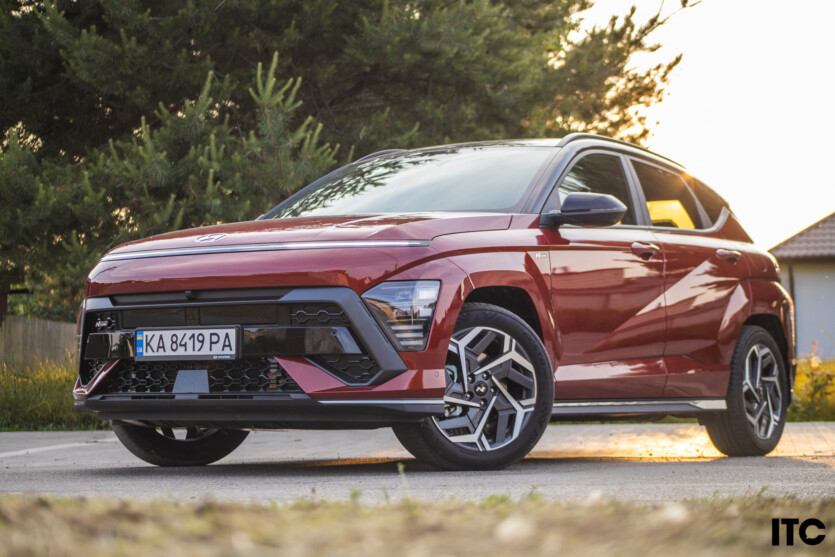
While other representatives of the brand compete for design awards, the smaller SUV Hyundai Kona Hybrid 2025 goes its own way, offering the most practicality and usability.
I would really like to be behind the scenes of the design department when they were making decisions on the final sketches of the new Kona. Although this crossover looks pretty decent and bold in the sketches, it evokes very conflicting emotions as a finished model. If the Ionic 5 seems to have come out of «Star Wars», then this compact is from «RoboCop».
Although it reminds me more of an evil Pokémon with a strange appearance and hidden talents. And the Hyundai Kona Hybrid 2025 hides no less controversial abilities. And in the second generation, new features were added to its piggy bank.
Content
New style
The world saw the next generation of the B-segment crossover in 2024. The Hyundai Kona Hybrid 2025 is built on the fresh K3 platform and shares it with its brother, the Kia Niro. Dimensions have increased in all proportions: the length has increased by 175 mm (4,355 mm), height (1,575 mm) and width (1,825 mm) — about 20 mm, and the wheelbase by 60 mm (2,660 mm). The appearance has changed accordingly. It seems that the Kona has been inflated, but it hasn’t harmed it in any way, quite the contrary.
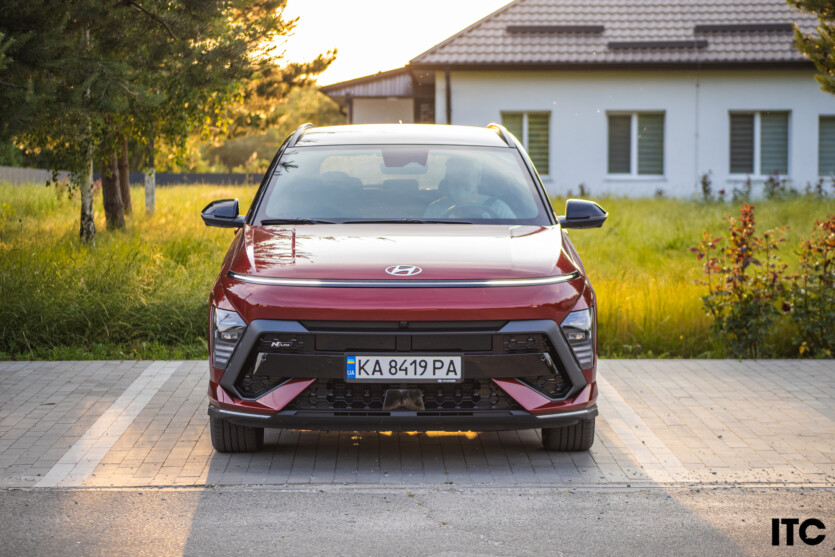
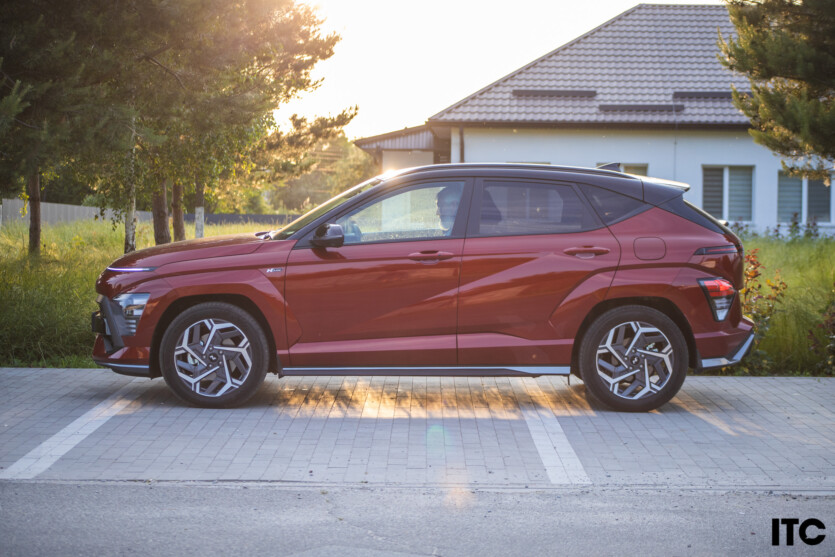
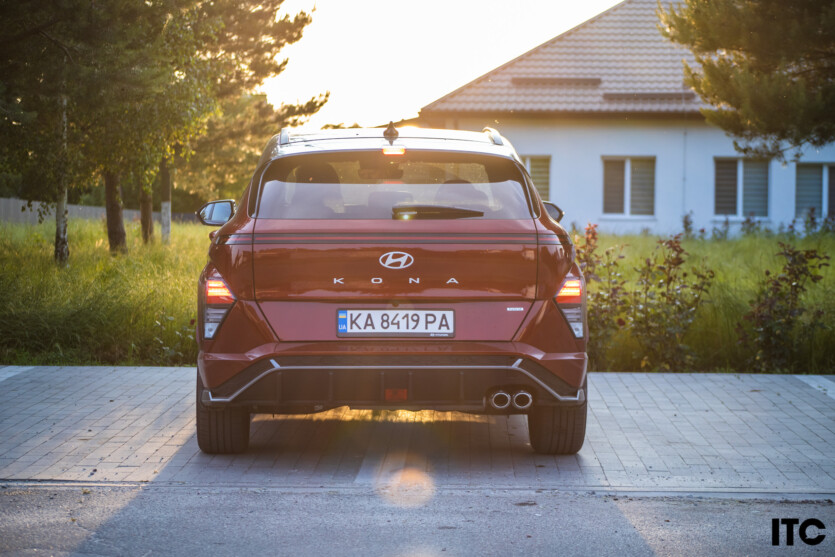
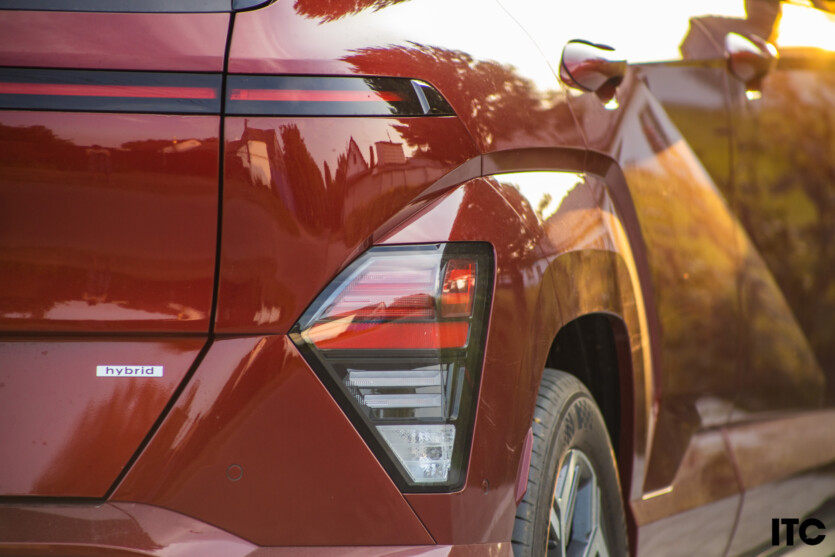
Now the headlights have a different shape, more triangular, and LED optics everywhere, even in the base, and the last two trims will have adaptive high beams. It’s not matrix yet.
The Kona’s exterior continues Hyundai’s trend of producing the most eccentric designs, although this time it’s hard to find an explanation for it and, in general, this style is for amateurs. In any case, it impresses with its thoughtfulness, integrity, and attention to detail. I never tire of applauding the design team headed by Sangyup Lee, who never stops creating bold solutions.
The intricate body stampings actually serve their purpose, as does the rear spoiler with integrated brake light. The aerodynamic coefficient may not be amazing, but it is a pleasant 0.27, which fits in with the best. The optics work perfectly even in an unusual place, not inferior to any brand representative, and the camera and radar panels are so harmoniously integrated into this complex design that you won’t even notice them. Now the overall stripes are connected by a single strip that glows at night, and the same is true for the rear. It looks definitely modern and a bit futuristic.
Kona has now reached us in the top-of-the-line N-Line version. No, not a sporty N, but just a stylization, it’s like Red Bull, without caffeine. The top equipment includes black skirts in the front and rear in a more aggressive style, a black grille, black mirrors, body-colored wheel arches, 18-inch wheels and sporty dual exhaust pipes.
Attention to detail
As for me, Kona has never claimed the crown of beauty queen, but rather its practicality, which they tried to preserve and highlight in the latest generation. As in the case of the Ionic, the design was reassembled around the electric version, and thus around the interior. So there are even more changes in the interior, and it immediately catches your eye.
If the old Kona was a small dorm room, the Hyundai Kona Hybrid 2025 is already an open space with a MacBook: two screens, backlight, space. And everything smells like new life.
The overall architecture of the Hyundai Kona Hybrid 2025 remains classic, but the organization of the space is unique and designed to maximize storage space and comfort. Despite the barely noticeable old-fashioned touch and the simplicity of some plastics, the atmosphere is quite high quality. The design is not too fancy, so there are few distractions.
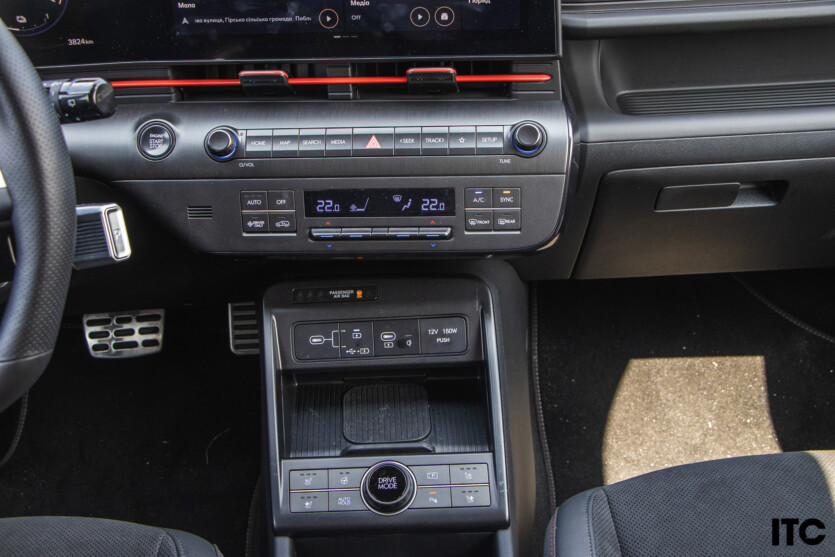
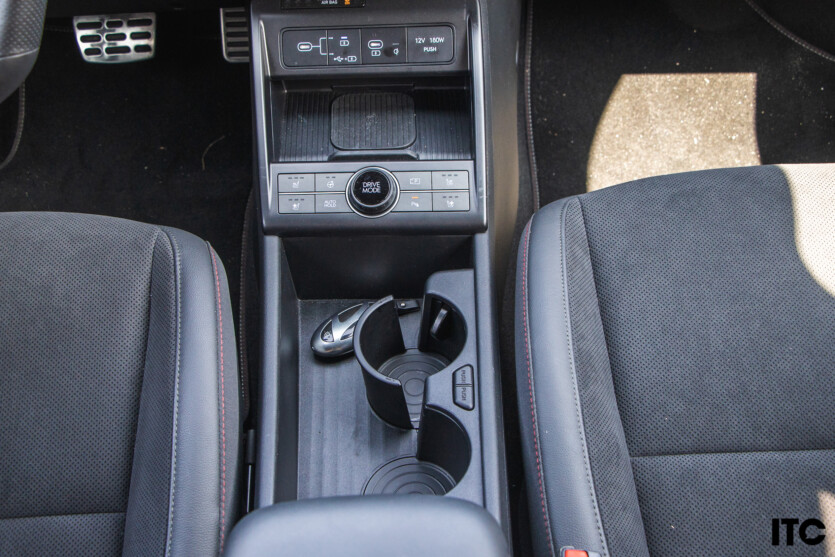

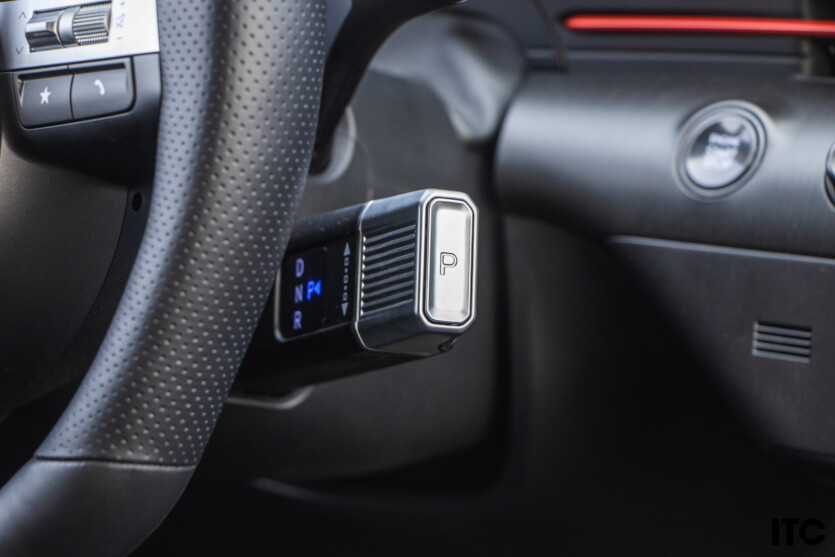
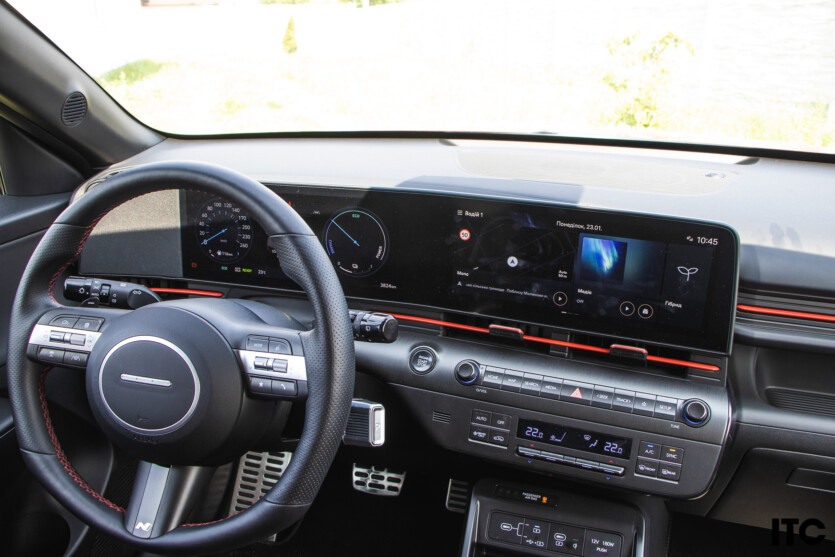
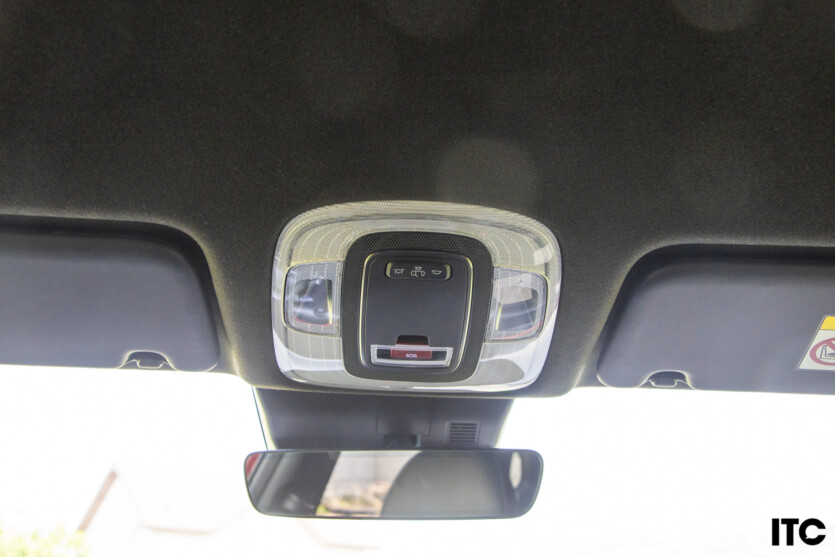
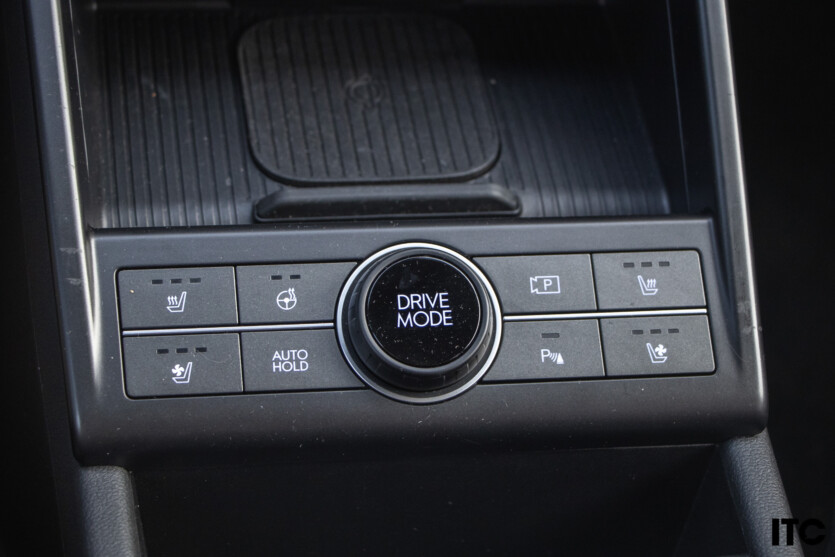
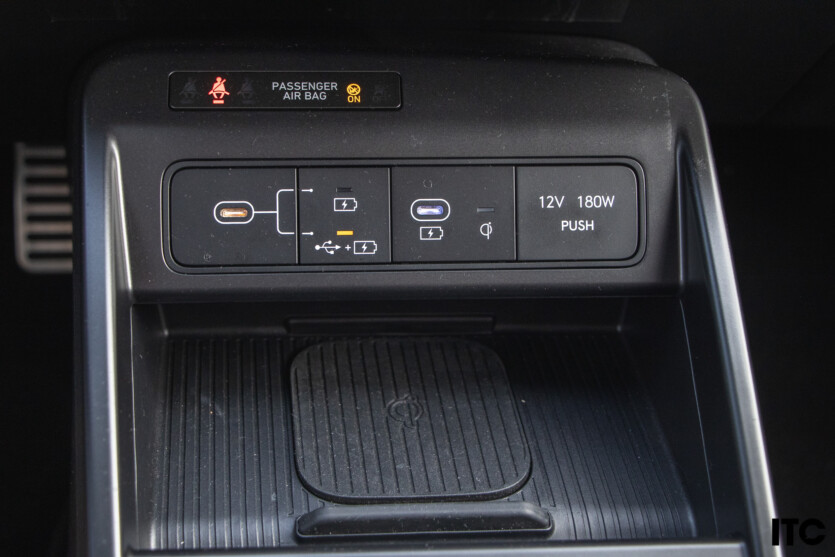

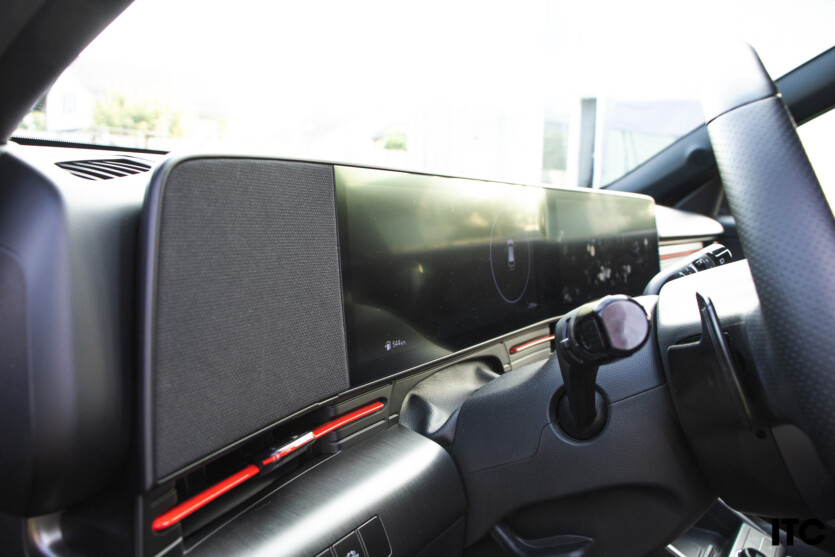


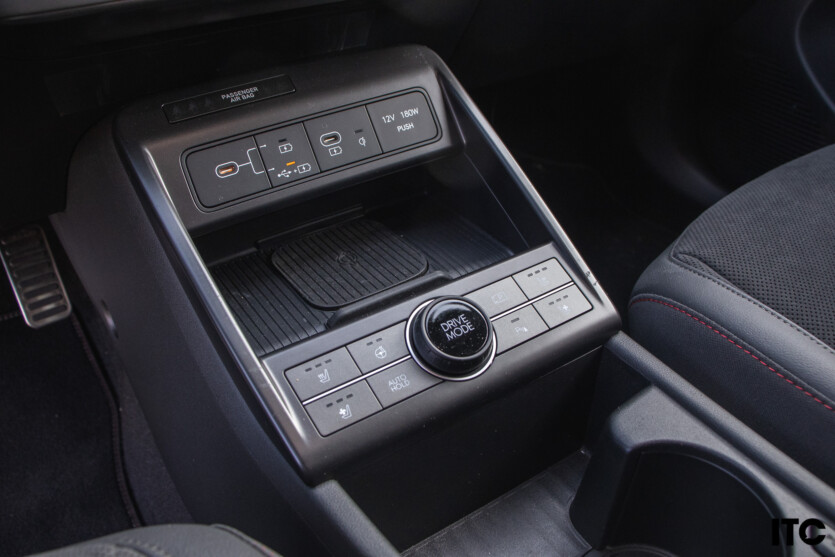
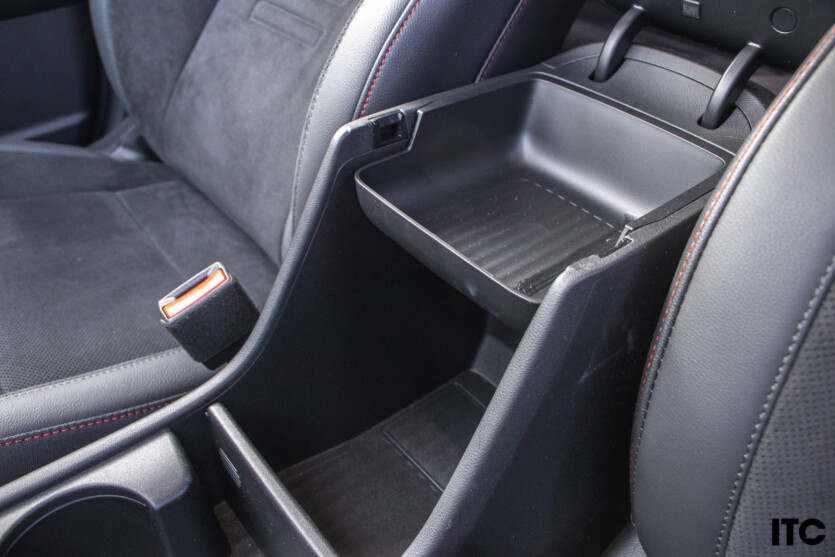
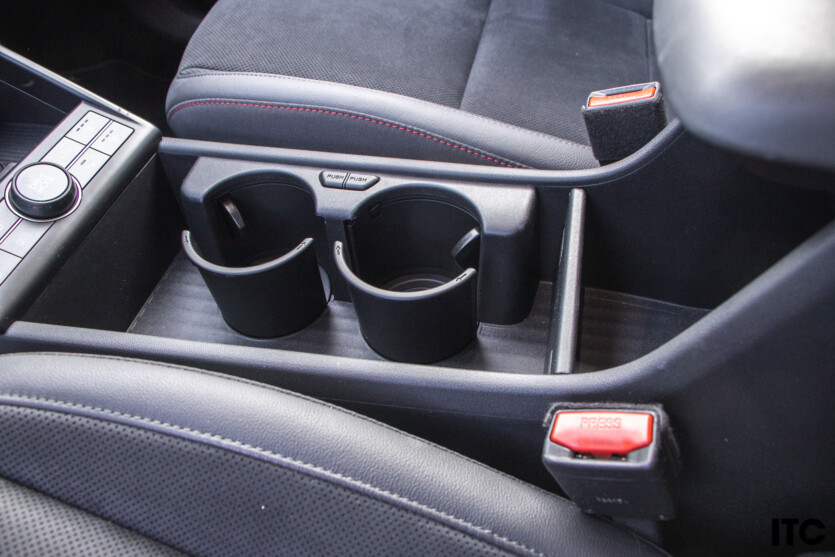
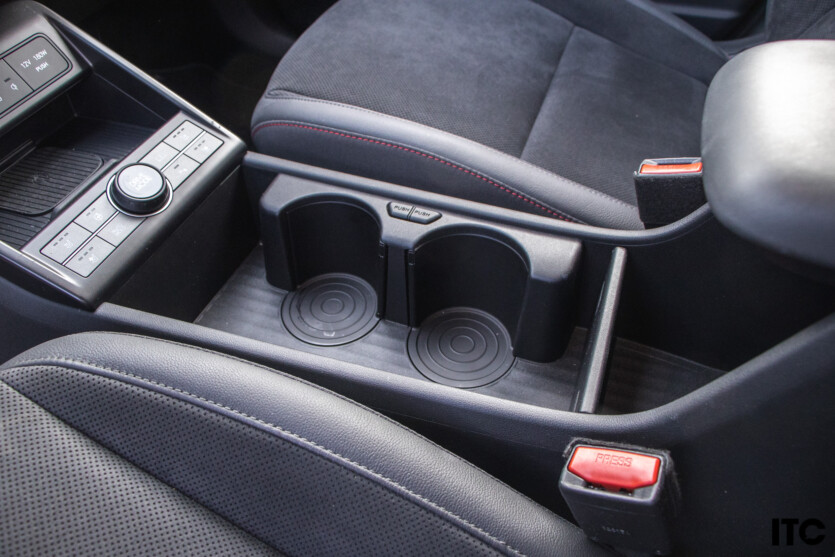
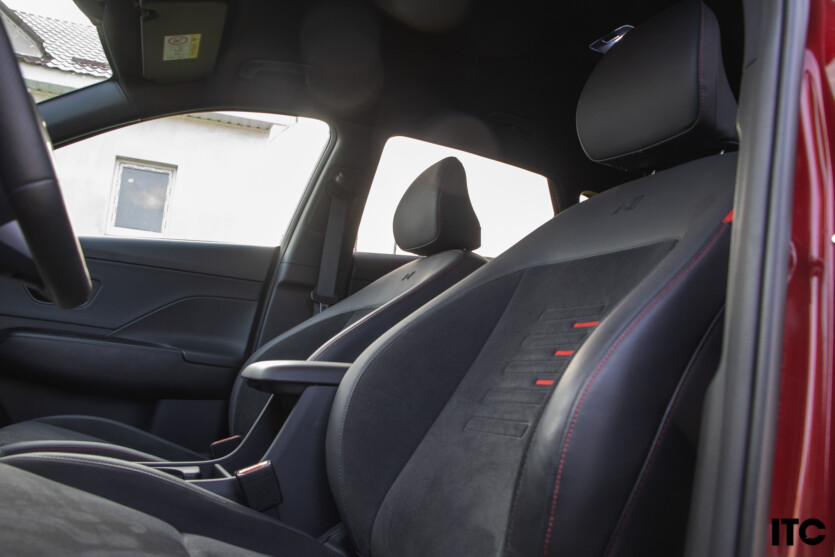
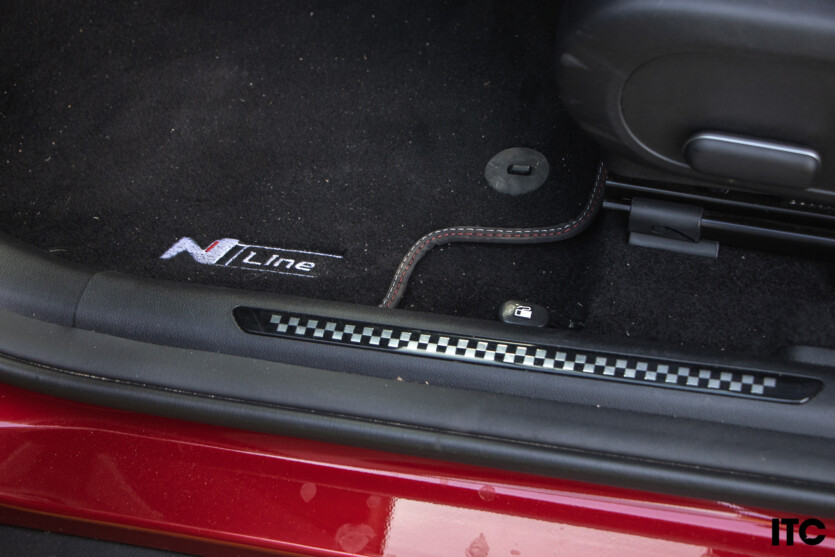
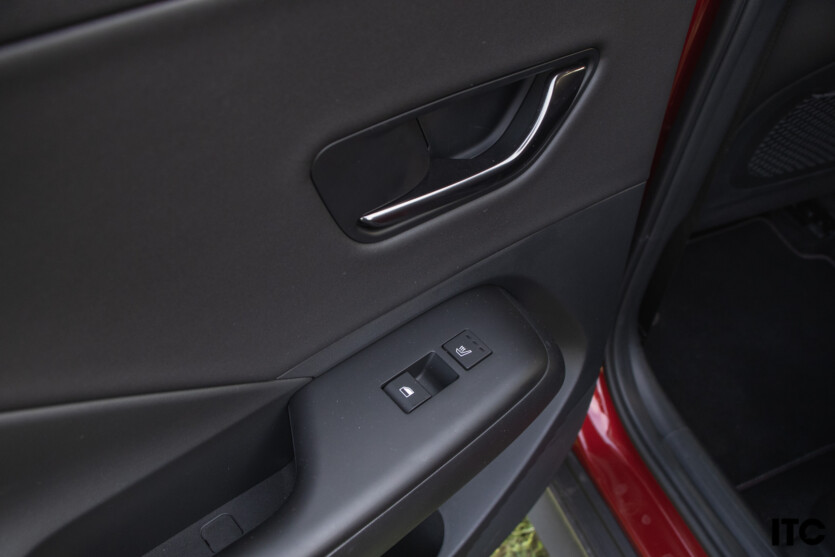
Despite the large branded 12.3-inch connected tablets, most of the functions are located under the monitor and on the center console. This reference to the classics is very nice, because it’s not so convenient to click on the monitor while driving. Although you won’t hear any complaints about the interface from me. Everything is concise, clear, and within three clicks — the rule «user-friendliness» design.
I like the new style of the Hyundai Kona Hybrid 2025. The gear lever has been moved under the steering wheel, as in the latest models of the brand. A large niche for small items has been made in the middle instead of the standard cupholders, and the cupholders simply slide out as needed. There are two storage containers under the armrest, and wireless charging is quite convenient and holds the smartphone firmly, although it does overheat a bit. The new torpedo offers an additional niche above the glove compartment, and the air deflectors seem to merge with the overall styling.
Special thanks for the preservation of the climate panel, which is two-zone and has three levels of automatic mode. A separate button for switching only to direct the climate to the driver is an interesting feature. In addition, the top-end configuration will have heating for all seats, and ventilation for the front ones.
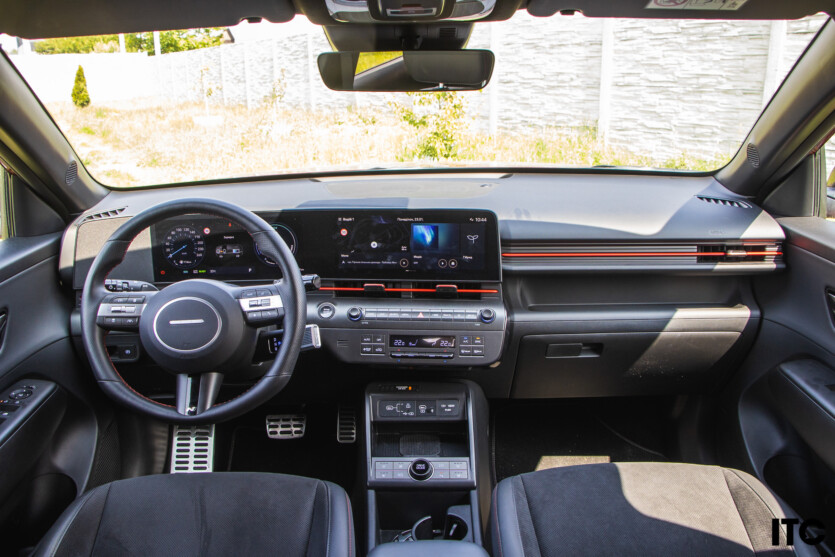


In the N-line trim, the interior looks like a gaming room with black and red styling, sporty bucket seats, metal pedal pads, soft, rich materials, and eco-accentara seat upholstery, which is 65% recycled plastic.
Type-C smartphone chargers have a separate power button, or switch from charging to connecting to the system. Only Hyundai offers such goodies. Interestingly, there are two more outputs for connecting gadgets behind, which are interestingly integrated into a niche for small items. There are pockets in the backs of the seats and plastic covers to keep children from getting dirty. Plus, there is access to the luggage compartment if you fold down the middle part of the rear sofa.
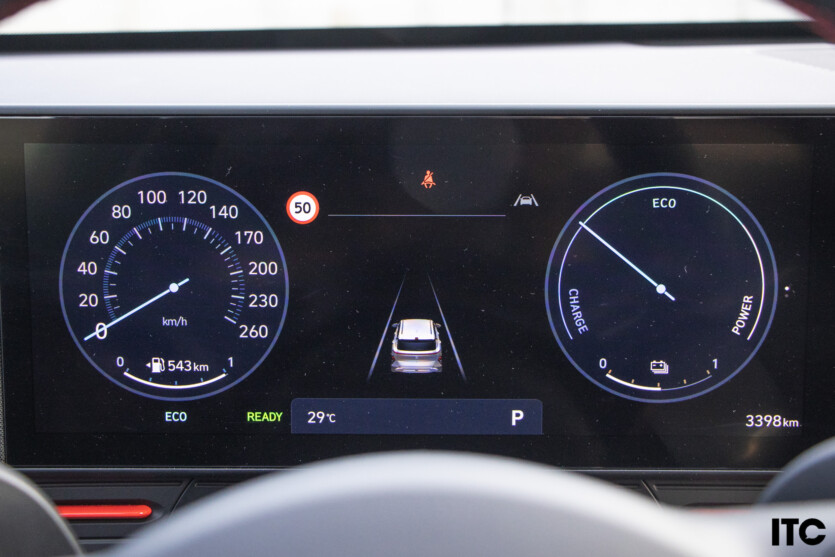
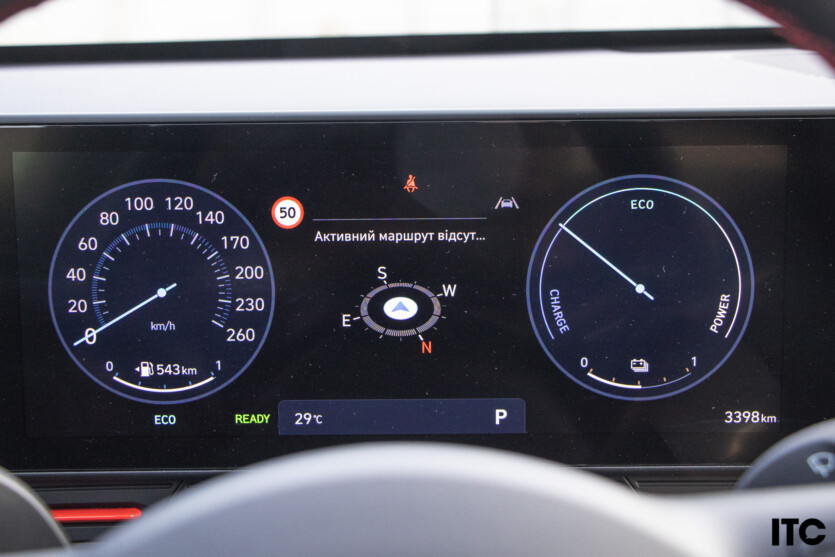


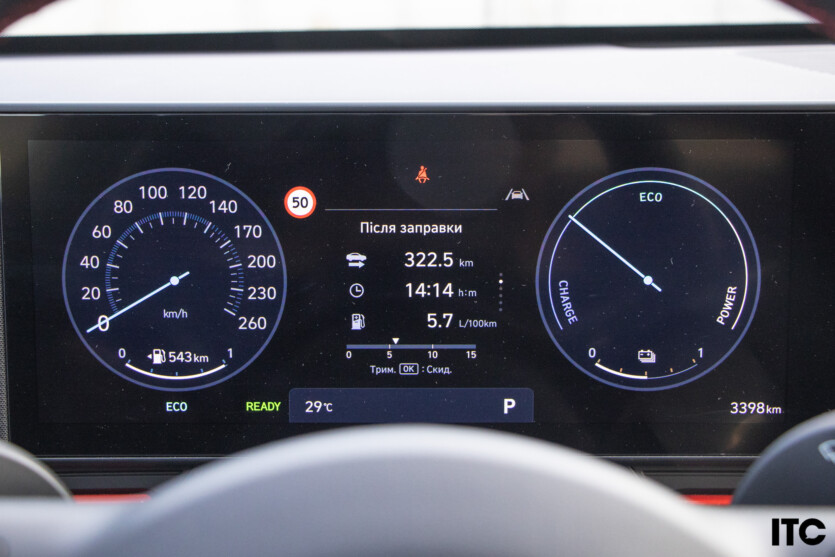
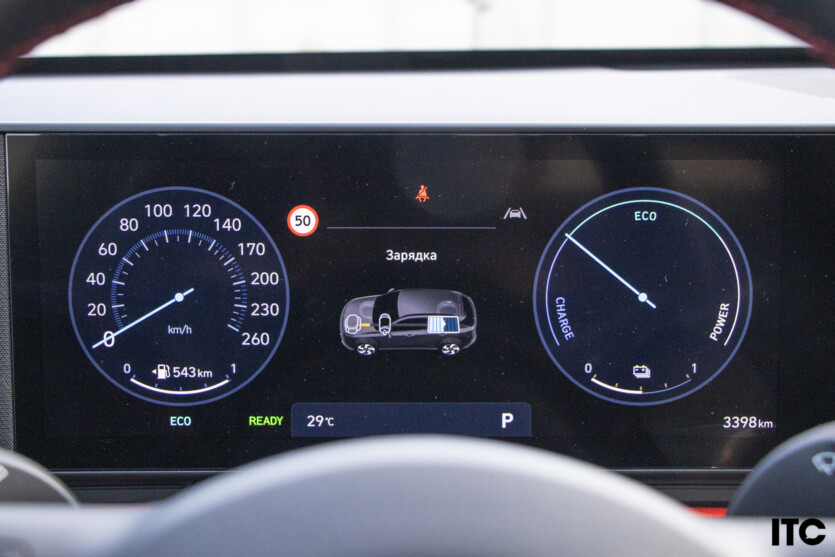
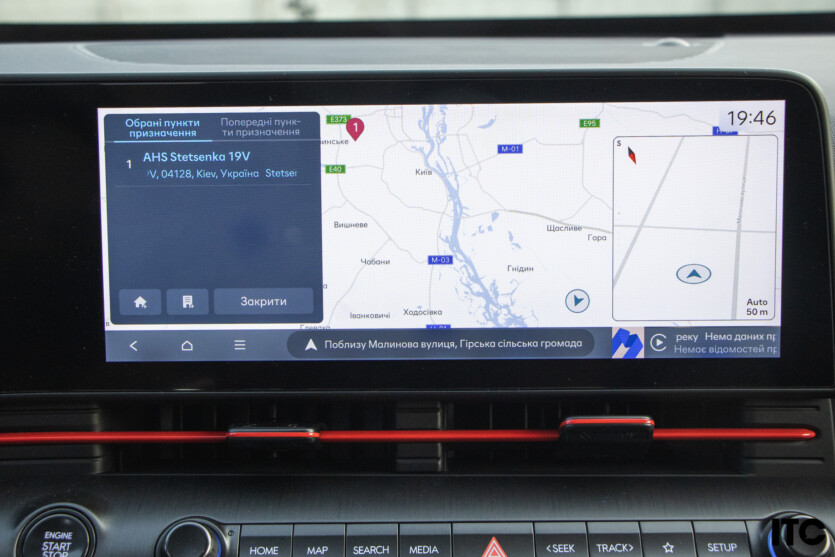

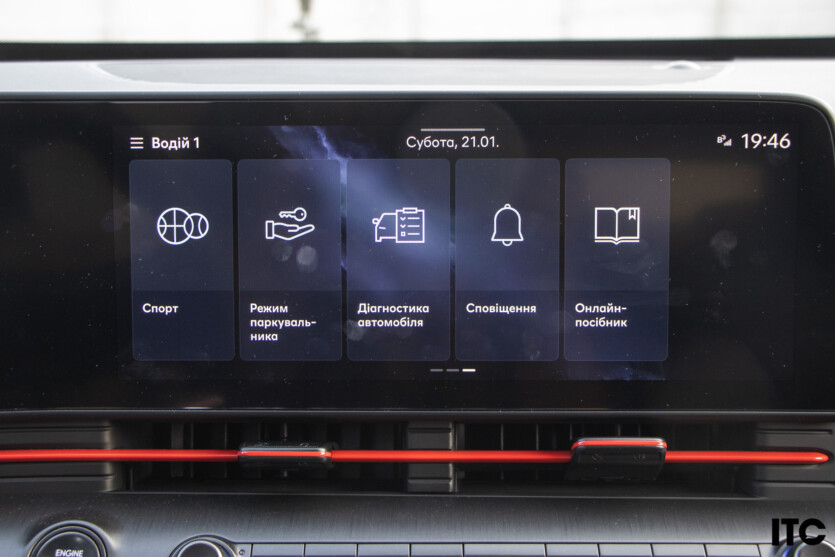
The instrument cluster offers one overall view and variable information from the vehicle systems and the trip computer. Changes are controlled on the steering wheel on the right, and adaptive cruise can be activated on the left.
If someone complained about the lack of space in the previous crossover, the situation is completely different now. And the increase in size has played in favor of the rear passengers, adding legroom and headroom. You can even sit comfortably in the middle of the sofa. We also added space to the luggage compartment, and it’s good to know that even in an electric car, space is not consumed.
The trunk of the Hyundai Kona Hybrid 2025 has a volume of 466 liters and offers maximum space even compared to competitors such as the Ford Puma (456 liters) or Peugeot 2008 (434 liters). There are two floor levels, where a repair kit is hidden below instead of a tire iron, and you can also hide tools. The luggage compartment itself has no side, which is convenient on the one hand, but on the other hand, if something falls out, it will fall out.
Deceptive aggression
We are used to hybrids offering double the power and dynamics of electric vehicles paired with an internal combustion engine, but the Hyundai Kona Hybrid has its idea on this. This compact crossover is for those who want to look like a racer, but drive like an accountant from Pryluky. It has a total of 141 hp and 147 Nm of torque, and that’s at 4,000 rpm, as if it has crushed everything it can.
And this is actually justified in our version because ecology sets its limits and drives manufacturers into them. Hyundai, having taken the direction of rapid integration into environmental friendliness, distributed tasks among a wide range of models. And it was Kona that was dealt the card of practicality and comfort. It so happened from the moment of its appearance that it shows itself even better than everyone expects from it. Its fame preceded it, and it has gained quite a reputation.
So this generation has only enhanced the feeling. The main advantage of the Hyundai Kona Hybrid is not so much environmental friendliness as utility and economy. The hybrid system has not changed and has a small battery, an electric motor, and can travel short distances on electricity alone, but even at speed when driving at a rolling pace. However, such systems usually lose their performance and fuel economy when driving on the highway.
With the Hyundai Kona Hybrid 2025, the opposite is true: even when the 1.6-liter turbocharged gasoline engine is operating within 90-110 km/h, it reduces fuel consumption. My city figures were 5.0-5.7 liters of consumption, and while driving on the highway I managed to drop to 4.2 liters, and sometimes even to 3.2 liters, which is a record for hybrids. Even the Honda ZR-V with its modern hybrid transmission can’t boast of such figures, let alone Toyota or Lexus.
But driving such a «carriage» is not very fun because the dynamics are sluggish, and at acceleration speed it can even set you up when overtaking. The 6DCT box with two clutches gets a little lost at high speeds and is not very willing to downshift. And these second delays can even be frightening. Yes, and the engine is reluctant to rev and does not find enough power, which is not surprising.
Although the steering wheel is quite resilient, it does not indulge in clarity and response. Only the driving modes can help a little, but they do not significantly change the situation with the dynamics, even in Sport mode. However, I still haven’t found out how the Snow mode is useful in mono-wheel drive, perhaps the assistance systems start to act a little more actively.
Only the suspension can be praised for its elasticity and bumps. It is multi-linked and guarantees fairly restrained vibrations for passengers. It absorbs small potholes well and responds a bit harshly to larger ones, but not critically and without breakdowns.
But the most important thing to mention is the revised hybrid system and parts of the units that had some flaws in the predecessor have now been corrected and everything is quite simple and durable. All cars that are considered to be unbreakable are based on their maintainability and easy access to the main parts of the engine, generator, chassis, and others. And now everything in Kona meets the reliability status.
Security in the benefits
In addition to efficiency, safety comes to the fore in the Hyundai Kona, as it features the latest generation of Hyundai Smart Sense. It’s not just adaptive cruise — it’s a set of systems that work to monitor the surrounding situation. The system uses sensors and radars to ensure safe driving and to automatically adjust the speed. It works with Highway Driving Assist, which also monitors map data to ensure safe driving and automatically adjusts the speed.
While driving, it helps you with notifications about objects in blind spots and will even prevent you from changing lanes if there is a car in the way. It’s quite aggressive and persistent, so you have to be careful. Sometimes it does not realize that you are already being passed. The same thing happens with lane-keeping if you’re going around potholes.
And of course, the top trims offer an unrivaled camera system in the mirrors that transmits the image directly to the wells on the dashboard when the turn signal is turned on. The wide angle allows you to clearly see blind spots and the presence of other road users. They also help a lot when driving in narrow streets or in yards. In general, 360 cameras are excellent and offer any angle of view and can be selected.
And for the first time, Hyundai Kona debuts the Connected Car Navigation Cockpit (ccNC) smart navigation, as well as the Hyundai Digital Key 2 Touch function, which allows you to open the car via smartphone or Apple Watch 1. The car also responds to the key’s proximity and can even open the trunk on its own when you approach it.
In addition, all systems are integrated as much as possible, from cloud updates to car control via the Bluelink app. It mostly works for the electric version, but it can provide some functions for conventional cars as well. It allows you to lock or unlock the car remotely, saves the route and data on the car’s status.
Conclusions and positioning
In Europe, the Hyundai Kona offers the widest range of powertrains, but so far, we have only received the hybrid version, and it is perhaps the most interesting of all, both in terms of economy and safety and comfort. Judging by the qualities of the Hyundai Kona, we can definitely say that it is one of the most technologically advanced crossovers in the class, with an emphasis on safety and economy.
It can only be contrasted with the Toyota Yaris Cross, which also has a high level of safety and efficiency. But it is better in handling, although it loses in interior space. The Corolla Cross will generally fall out of the competition because it cannot offer modernity and technology, but it has a lot of interior space.
The Peugeot 2008 will also compete at a high level, but it does not have a hybrid drive, only an electric analog. Therefore, Kona has every chance to get its consumers, who will be ready to pay from 31 to 36 thousand dollars for a compact crossover of this level.
PROS: efficiency, safety, practicality, technology, interior comfort, space.
CONS: poor performance, sometimes annoying assistance systems.
| Body, type | SUV |
| Dimensions (LxWxH), mm | 4385x1825x1585 |
| Wheelbase, mm | 2660 |
| Declared ground clearance, mm | 145 |
| Trunk volume, liters. | 466 |
| Curb weight, kg | 1525 |
| Engine | 1.6 |
| Power, hp. | 141 |
| Torque, Nm | 147 |
| EV power, hp. | 32 |
| EV torque, Nm | 170 |
| Li-ion battery, kWh | — |
| Type of drive | 2WD |
| Pendant | Independent McPherson/multi-lever |
| Transmission | 6DCT |
| Dynamics 0-100, s | 10,9 |
| Maximum speed, km/h | 165 |
| Fuel consumption, l (mixed) | 4,7 |
| Cost, UAH | From 1 265 500 |
| The cost of the test car, UAH | 1 488 700+ |
| Competitors | Toyota Corolla Cross |
| Nissan Juke | |
| VW T-Cross | |
| Ford Puma | |
| Peugeot 2008 | |
| Jeep Avenger |

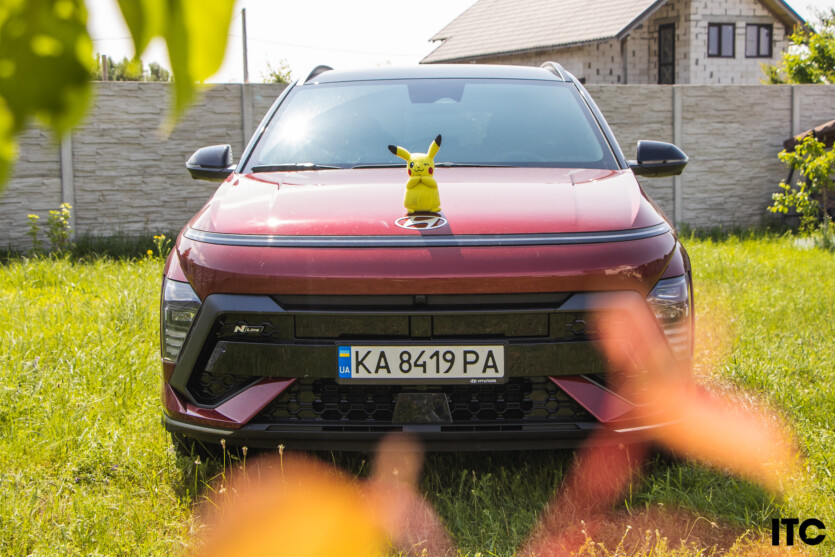

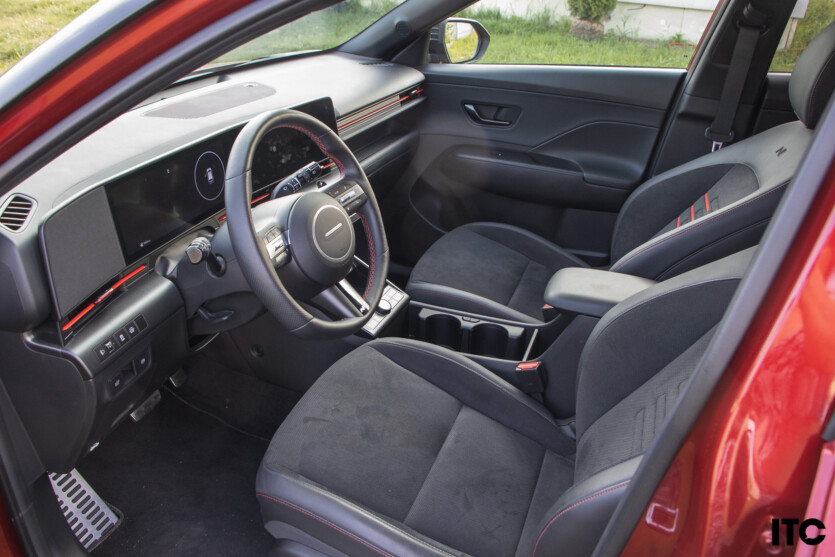


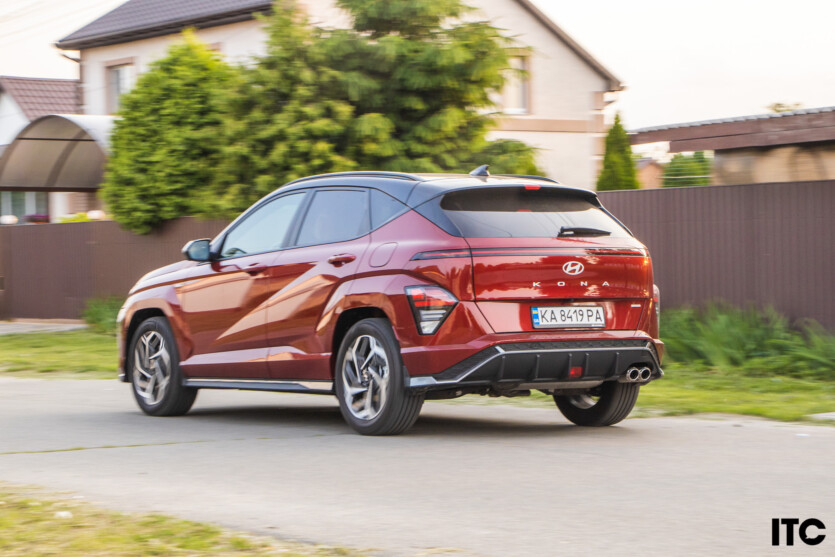

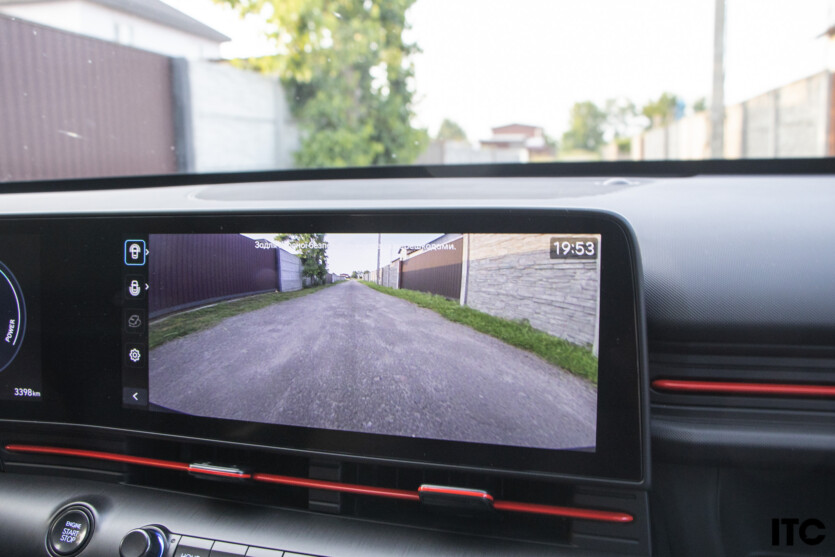
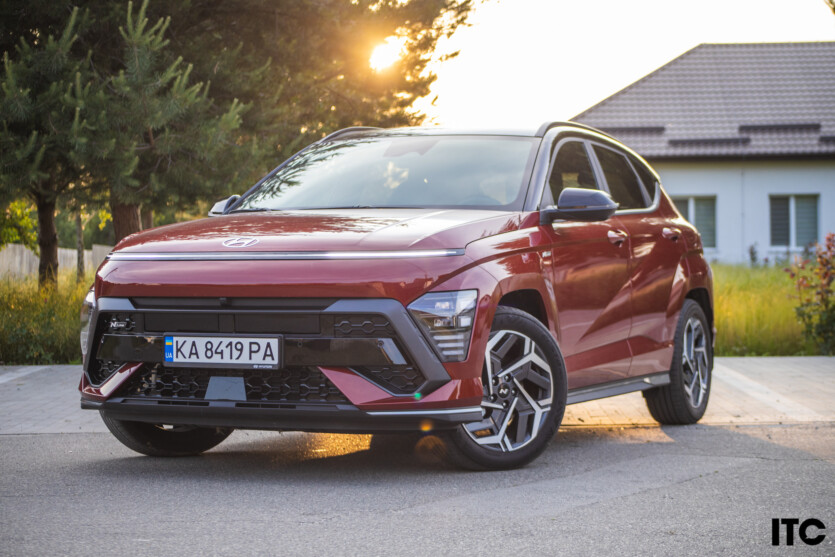
Spelling error report
The following text will be sent to our editors: